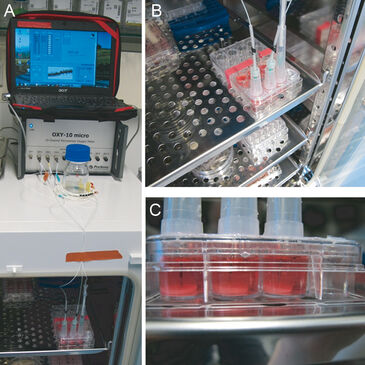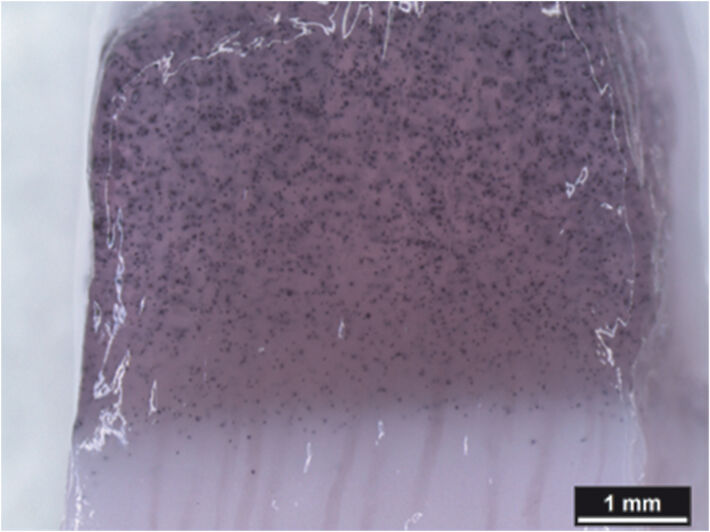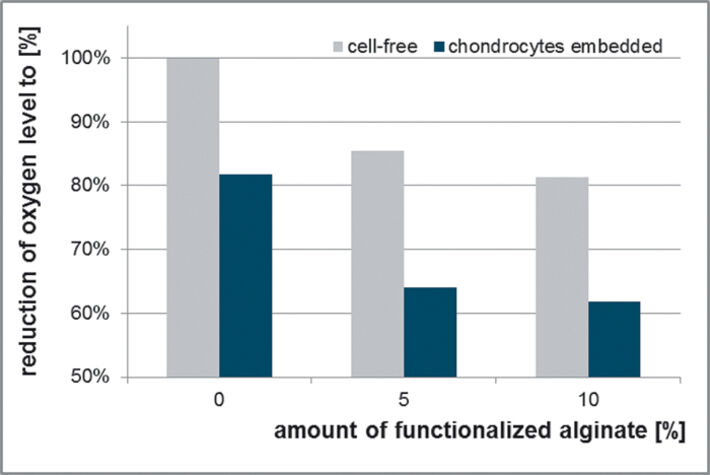Watch tutorials, webinars and informative videos about PreSens optical sensor systems.
Alginate-based Bi-layered Hydrogels with Embedded Cells for the Regenerative Therapy of Osteo-chondral Defects
Using needle-type oxygen microsensors to measure oxygen saturation in an artificial cartilage construct
F. Despang1, K. Schütz1, F. Milan1, S. Meikle2, M. Dessi2, M. Santin2, M. Gelinsky1
1Technische Universität Desden, Medical Faculty and University Hospital, Centre for Translational Bone, Joint and Soft Tissue Research, Germany
2Brighton Studies in Tissue-mimicry and Aided Regeneration, School of Pharmacy and Biomedical Sciences, University of Brighton, GB
For the translation of the tissue engineering approach to clinical applications, cell vitality is of crucial importance for the regeneration of impaired tissue. Insight in the global and local constitution of adhering or embedded cells, especially in the center of cell-matrix-constructs, is essential for optimization, cell vitality, and differentiation. Monitoring of oxygen concentrations indicates the condition of the cells within the constructs and therefore is important for the development of suitable cell carrier matrices called scaffolds. In the case of cartilage, hypoxic conditions are preferred. Hence the influence of embedded chondrocytes and oxygen sequestering molecules in alginate based scaffolds on the oxygen level has been studied. A reduction of the oxygen saturation to approximately 80 % was observed. The needle-type oxygen sensors proved to be very effective monitoring the oxygen inside a hydrogel under sterile conditions.

Controlling oxygen levels of cell-matrix-constructs plays a major role in regenerative therapy and tissue engineering. Cartilage is a hypoxic tissue with low regenerative capacity. Therefore it is essential to deliver vital and homogeneous distributed cells in the construct and maintain their position for a successful healing. Biphasic but monolithic scaffolds can be used as a promising approach to treat osteo-chondral defects where cartilage and subjacent bone is damaged [1]. The anchoring of the construct in the bone is ensured by a layer comprising the ceramic phase of bone. Chondrocytes can be embedded in alginate hydrogel containing components of cartilage matrix [2] and oxygen controlling functionalization. The objective of the study was to detect and preferably quantify the reduction of the oxygen saturation inside the chondral layer of the scaffold caused by living chondrocytes and the chemical modification under sterile conditions.
Materials & Methods
Carboxylic groups of alginate were functionalized with molecules as an engineered system aiming to control oxygen perfusion in acellularised and cellularised tissue engineering scaffolds. Biphasic but monolithic bio-hybrid scaffolds with parallel aligned pore channels were generated applying the method of ionotropic gelation [1] under sterile conditions. Therefore an alginate-based sol with hydroxyapatite, sols of pure or blends with modified alginate were placed in a beaker and gelled by Calcium ions over night. The phase without ceramic particles was dedicated to the repair of cartilage and therefore chondrocytes were embedded in this layer in a second run of the experiment. The hydrogel was cut and punched to cylindrical shape. Needle-type microsensors (PreSens, Regensburg, Germany) are glass fibers with an oxygen sensing coating which are housed in a syringe with steel needle allowing the penetration of soft materials. The experimental set-up enabled the use of the needle-type microsensor in a standard cell culture incubator
(Fig. 1 A + B). For the in vitro application, the needles and glass fiber tips were disinfected with 70 % ethanol. The needles were positioned inside the chondral part of the scaffolds (Fig. 1 C). Scaffolds with or without cells were cultured in Dulbecco´s minimal essential medium (DMEM) in a 24 well plate. Embedded viable chondrocytes were stained using MTT assay (Fig. 2). The change in oxygen saturation was measured over 3 days in an incubator and normalized to the measurement without cells or modification (Fig. 3). Two experiments with 3 samples (differing in content of modified alginate) each had been conducted; the first with cell-free scaffolds and the second with scaffolds including embedded chondrocytes. However, only one measurement per concentration was taken (n = 1) for the study to prove the principle.
Reduction of Oxygen Saturation
A longitudinal section revealed bi-layered structure of the scaffold designed for bone and cartilage repair (Fig. 2). Furthermore, parallel aligned pores were found to support ingrowth of osseous tissue. Chondrocytes survived embedding and were homogeneously distributed inside the chondral part of the biphasic scaffold (Fig. 2). The oxygen saturation decreased in presence of oxygen sequestering molecules compared to the case without any oxygen sequestering molecules (Fig. 3). Living chondrocytes reduced the oxygen level compared to the cell free samples during the same time of observation. The functionalization with oxygen retaining molecules and embedding of cells reduced the oxygen level to about 80 %. After this first prove of principle, the experiments need to be repeated to learn on the accuracy of the methods and set-up. Furthermore, the tests will be extended to different cell densities or even higher content of functionalized alginate.


Conclusion
Needle-type oxygen microsensors enabled the characterization of the local environment affecting the cells inside hydrogel scaffolds under sterile conditions. The effect of embedded chondrocytes and a funtionalization with oxygen sequestering molecules was quantified in vitro. Since the nutrient supply and monitoring of the oxygen saturation is curcial for tissue engineering, the needle-type oxygen microsensor proved an invaluable tool for research and development of cell-matrix- constructs for this approach of regenerative therapy.
References
[1] M. Gelinsky, M. Eckert, F. Despang "Biphasic, but monolithic scaffolds for the therapy of osteochondral defects" International Jounal of Materials Research, 2007, 98, 749 - 755
[2] K. Schütz, F. Despang, A. Lode, M. Gelinsky "Cell-ladden biphasic scaffolds with anisotropic structure mimic osteochondral tissue" Journal of Tissue Engineering and Regenrative Medicine, 2013, (submitted)


